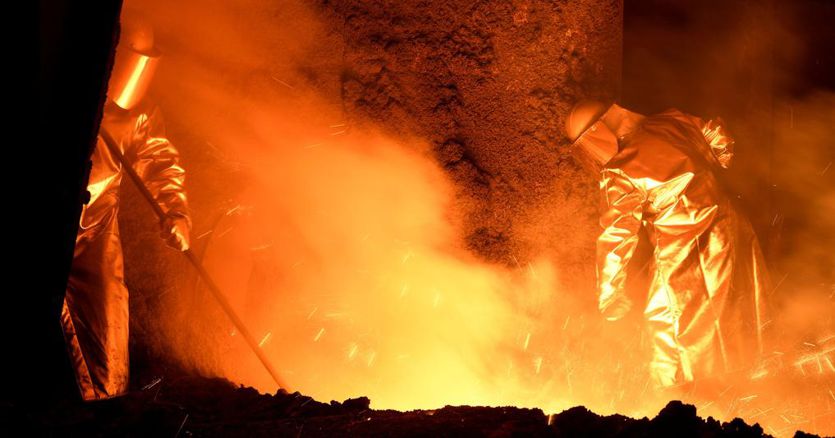A project to defend the steel supply chain, starting from the three national poles such as the former Ilva, the former Lucchini, Acciai Speciali Terni, but without neglecting other fundamental components, such as the electric furnace manufacturers in Lombardy and Triveneto and transformers. The Minister of Economic Development, Giancarlo Giorgetti, is ready to work to protect the Italian steel industry with a view to safeguarding the production upstream and downstream of the chain, in close contact with the user and related sectors, in an attempt to prevent the productive patrimony is depleted and above all in the awareness that the cases of Taranto and Piombino must be inserted in a wider context, within a plan for the reconstitution of a national supply chain, with a precise mission and vocation. The will is to build a sort of puzzle by putting all the pieces together: since the State is called into question – this is the reasoning in short – it is necessary to have an overview.
Steel cord and sheet at risk
The Government’s action aims to prevent, first of all, that the Italian steel industry loses these pieces on the street, as has already happened in the past, for example, with the electromagnetic sheet metal or with the steel cord. Two productions – linked to the mechanical and automotive industries – which Italy no longer oversees for different reasons. Sheet metal, a fundamental component in electric motors (from household appliances to the recent frontiers of mobility), was one of the products in Ast’s portfolio, but after the sale of the steel plant to ThyssenKrupp, the production line was stopped; in recent times the Arvedi group has tried to restart this type of production in Trieste. Similar fate for steel cord, a particular type of steel wire needed by the tire industry. In Italy, only the Belgian Bekaert remained to produce it, in the Figline Valdarno plant, but the multinational decided to leave Italy.
Loading…
Strategic production facilities
For two lost productions there are a series of production facilities which, if not properly managed, in turn risk disappearing. This is the case of the tinplate, the flagship of the former Ilva di Cornigliano, which requires adequate investments not favored by the uncertainties on the relaunch of the new public-private structure of the giant based in Taranto. Or titanium steel, which today is not the priority of an Ast projected towards a sales call that will see it leave the German orbit.
A defense to be defended concerns in particular the rails, of which the former Lucchini di Piombino is the only Italian producer. It is a strategic component (it is for every national railway industry), linked to RFI and in need of investments that today Jindal does not seem able to guarantee. And, again, the unraveling of the former Ilva’s ties with its suppliers, such as Sanac (refractories) and Innse (rolling rolls), now under extraordinary administration and awaiting a buyer, are worrying. And, again on the production factors front, the lesson of the electrodes of the former Elettrocarbonium of Narni is still alive: the company, now owned by the Chinese of GoSource, is vital for the activity of electric ovens and in the past the previous production difficulties the change of ownership created more than a headache.
The crux of energy costs
“Thinking about a broad plan for steel – explains Antonio Gozzi, past president of Federacciai – means addressing the issue of production factors, such as the procurement of scrap, which with the advent of production cycles in Europe risks becoming critical above all for the Italian production, already 80% linked to the electro-steel industry. Another fundamental issue is the price of energy, which must be kept at the same levels as foreign competitors. We must not make mistakes that cause the sector to lose competitiveness. The private steel industry is now competitive thanks to the strategic choices of the entrepreneurs, unlike the hotspots, which pay for the lack of investment, as evidenced by the questions about some productions, such as tinplate and rails ».
